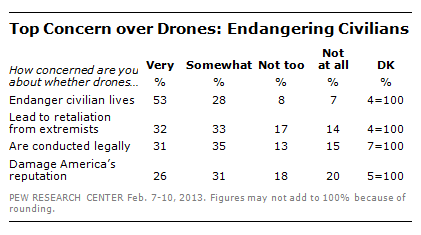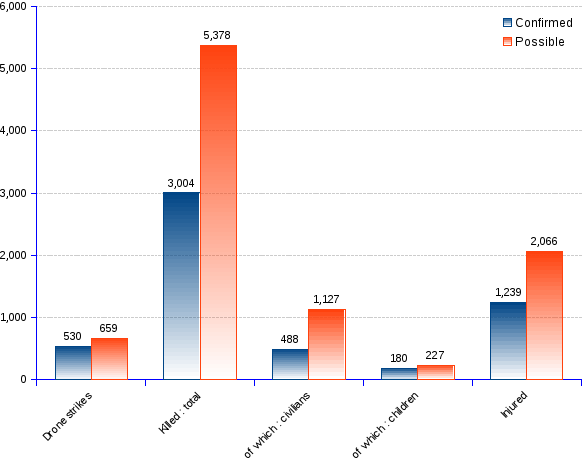President Obama’s Game of Drones
As chapter twelve of our textbook advances, the modern day presidency little reflects what the framers had in mind when they drafted the Constitution as the role has adapted and grown to changing times to include a wide-range of actions and responsibilities. With numerous roles such as the chief executive, chief of state, military leader, domestic policymaker, foreign policy leader, and head of their respective political party, the president has a great deal of influence over many aspects of the American government. This unique power was illustrated throughout Obama’s two terms as eight years and a total of 540 drone strikes, President Obama left the office of the presidency having enlarged and standardized the use of armed drones for both counterterrorism operations and close air support in non-battlefield settings.
Since 2001, drones have been used for the targeted killings of terror suspects in remote areas instead of having to send groups troops in, saving many lives in the process. Because Obama’s presidency relied heavily on drones in Somalia, Pakistan, and Yemen, and served as an important cornerstone for American foreign policy. However, many critics have argued that Obama created a lethal bureaucracy in which drone strikes kill innocent lives and abuse the basic structure of human rights. Furthermore, some argue that the president has no legal rationale to conduct such operations and that the lack of regulations by federal agencies causes these strikes to become extrajudicial killings. Yet, data from a PEW Research poll conducted in 2013 shows that while 31% of Americans were “very” concerned with the legal aspects of Obama’s drone usage, 53% were “very” concerned about the loss of innocent lives. It is thus important to differentiate between the drones being morally wrong and illegal. While the use of drones does raise some moral dilemmas over its effects on innocent civilians, President Obama was legally justified to carry out all these operations because of his role and powers as President.
Article II of the Constitution confers power to the president by stating that “The executive power shall be vested in a President of the United States.” As chapter 12 of the textbook states, Article I, Section 8, grants the president the role of commander in chief of the United States armed forces while at the same time entrusting Congress with the ability to declare war. However, the way the Constitution is written is vital to understanding the commander in chief role because the articles create a bifurcation between waging an offensive war in which Congress must spearhead or a defensive war in which the president is the primary decision maker. Therefore, the president of the United States is in his/her full authority to use American forces to protect the United States in the face of a real or perceived threat.
Describing the drone campaign, Obama stated that it is “a war waged proportionally, in last resort, and in self-defence.” In addition, the Obama administration is further justified to use drones under the 2001 Authorization for the Use of Military Force (AUMF), which allows the use of United States Armed Forces to combat those responsible for the 9-11 attacks and “associated forces”. Giving the president power “to use all necessary and appropriate force”, AUMF serves as the domestic legal foundation for empowering Obama’s use of drone strikes. This parallels the concept of unitary executive made popular in the Bush administration that the office of the presidency has the power and authorization over the entire executive branch in total regard. The AUMF serves to legally intertwine this notion with a written foundation, enabling the president to use force despite protests from other governmental agencies or branches.
 Drone Strikes under President Obama (Source: The Bureau of Investigative Journalism)
Drone Strikes under President Obama (Source: The Bureau of Investigative Journalism)
Article II of the Constitution confers power to the president by stating that “The executive power shall be vested in a President of the United States.” As chapter 12 of the textbook states, Article I, Section 8, grants the president the role of commander in chief of the United States armed forces while at the same time entrusting Congress with the ability to declare war. However, the way the Constitution is written is vital to understanding the commander in chief role because the articles create a bifurcation between waging an offensive war in which Congress must spearhead or a defensive war in which the president is the primary decision maker. Therefore, the president of the United States is in his/her full authority to use American forces to protect the United States in the face of a real or perceived threat.
Describing the drone campaign, Obama stated that it is “a war waged proportionally, in last resort, and in self-defence.” In addition, the Obama administration is further justified to use drones under the 2001 Authorization for the Use of Military Force (AUMF), which allows the use of United States Armed Forces to combat those responsible for the 9-11 attacks and “associated forces”. Giving the president power “to use all necessary and appropriate force”, AUMF serves as the domestic legal foundation for empowering Obama’s use of drone strikes. This parallels the concept of unitary executive made popular in the Bush administration that the office of the presidency has the power and authorization over the entire executive branch in total regard. The AUMF serves to legally intertwine this notion with a written foundation, enabling the president to use force despite protests from other governmental agencies or branches.
Drone Strikes under President Obama (Source: The Bureau of Investigative Journalism)
With an estimated 2,700 and 4,000 militants killed, Obama’s use of drones highlights an important aspect: they work. With senior leaders of al Qaeda, the Taliban, al Shabaab, and other terrorist organizations now eliminated, the use of drones has greatly weakened these groups and their ability to conduct operations across the globe. In addition, without having to send in group troops on otherwise risky missions, the United States is saving not only American lives but also civilians who otherwise might get trapped in a brutal ground conflict. President Obama was in full constitutional authority to undertake these actions as he was defending the United States from terroristic threats under Article I, Section 8, the principle of unitary executive, and the AUMF.
Link to Drone Warfare Facts by The Bureau of Investigative Journalism: https://www.thebureauinvestigates.com/projects/drone-war
Link to PEW Research Poll: http://www.pewresearch.org/fact-tank/2013/05/24/obama-and-drone-strikes-support-but-questions-at-home-opposition-abroad/
